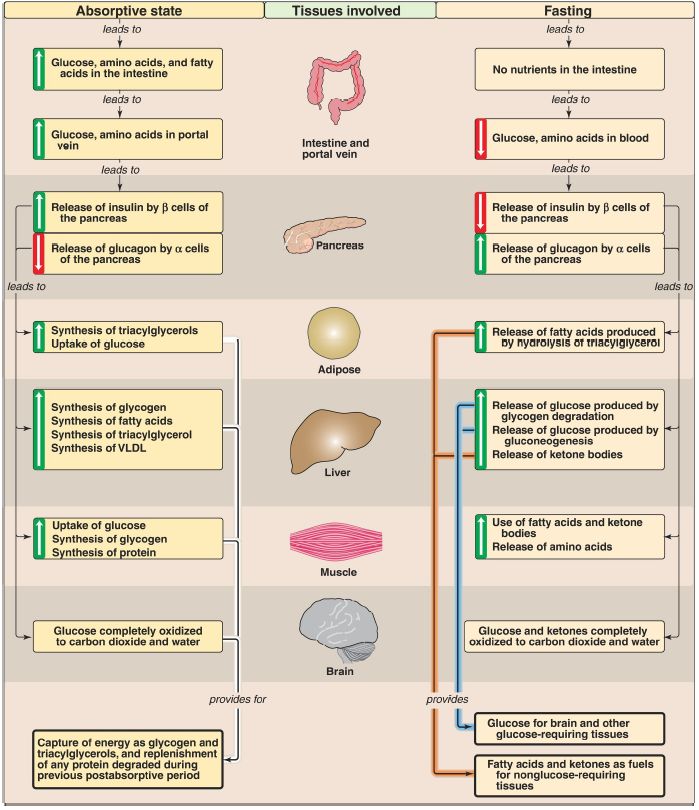

النبات

مواضيع عامة في علم النبات

الجذور - السيقان - الأوراق

النباتات الوعائية واللاوعائية

البذور (مغطاة البذور - عاريات البذور)

الطحالب

النباتات الطبية


الحيوان

مواضيع عامة في علم الحيوان

علم التشريح

التنوع الإحيائي

البايلوجيا الخلوية


الأحياء المجهرية

البكتيريا

الفطريات

الطفيليات

الفايروسات


علم الأمراض

الاورام

الامراض الوراثية

الامراض المناعية

الامراض المدارية

اضطرابات الدورة الدموية

مواضيع عامة في علم الامراض

الحشرات


التقانة الإحيائية

مواضيع عامة في التقانة الإحيائية


التقنية الحيوية المكروبية

التقنية الحيوية والميكروبات

الفعاليات الحيوية

وراثة الاحياء المجهرية

تصنيف الاحياء المجهرية

الاحياء المجهرية في الطبيعة

أيض الاجهاد

التقنية الحيوية والبيئة

التقنية الحيوية والطب

التقنية الحيوية والزراعة

التقنية الحيوية والصناعة

التقنية الحيوية والطاقة

البحار والطحالب الصغيرة

عزل البروتين

هندسة الجينات


التقنية الحياتية النانوية

مفاهيم التقنية الحيوية النانوية

التراكيب النانوية والمجاهر المستخدمة في رؤيتها

تصنيع وتخليق المواد النانوية

تطبيقات التقنية النانوية والحيوية النانوية

الرقائق والمتحسسات الحيوية

المصفوفات المجهرية وحاسوب الدنا

اللقاحات

البيئة والتلوث


علم الأجنة

اعضاء التكاثر وتشكل الاعراس

الاخصاب

التشطر

العصيبة وتشكل الجسيدات

تشكل اللواحق الجنينية

تكون المعيدة وظهور الطبقات الجنينية

مقدمة لعلم الاجنة


الأحياء الجزيئي

مواضيع عامة في الاحياء الجزيئي


علم وظائف الأعضاء


الغدد

مواضيع عامة في الغدد

الغدد الصم و هرموناتها

الجسم تحت السريري

الغدة النخامية

الغدة الكظرية

الغدة التناسلية

الغدة الدرقية والجار الدرقية

الغدة البنكرياسية

الغدة الصنوبرية

مواضيع عامة في علم وظائف الاعضاء

الخلية الحيوانية

الجهاز العصبي

أعضاء الحس

الجهاز العضلي

السوائل الجسمية

الجهاز الدوري والليمف

الجهاز التنفسي

الجهاز الهضمي

الجهاز البولي


المضادات الميكروبية

مواضيع عامة في المضادات الميكروبية

مضادات البكتيريا

مضادات الفطريات

مضادات الطفيليات

مضادات الفايروسات

علم الخلية

الوراثة

الأحياء العامة

المناعة

التحليلات المرضية

الكيمياء الحيوية

مواضيع متنوعة أخرى

الانزيمات
Feed–Fast Cycle
المؤلف:
Denise R. Ferrier
المصدر:
Lippincott Illustrated Reviews: Biochemistry
الجزء والصفحة:
26-11-2021
4387
Feed–Fast Cycle
The flow of intermediates through metabolic pathways is controlled by four regulatory mechanisms: 1) the availability of substrates, 2) allosteric activation and inhibition of enzymes, 3) covalent modification of enzymes, and 4) induction-repression of enzyme synthesis. In the absorptive state, the 2- to 4-hour period after ingestion of a meal, these mechanisms insure that available nutrients are captured as glycogen, triacylglycerol (TAG), and protein (Fig. 1).
During this interval, transient increases in plasma glucose, amino acids, and TAG occur, the last primarily as components of chylomicrons synthesized by the intestinal mucosal cells. The pancreas responds to the elevated levels of glucose with an increased secretion of insulin and a decreased secretion of glucagon.
The elevated insulin/glucagon ratio and the ready availability of circulating substrates make the absorptive state an anabolic period during which virtually all tissues use glucose as a fuel. In addition, the liver replenishes its glycogen stores, replaces any needed hepatic proteins, and increases TAG synthesis.
The latter are packaged in very-low-density lipoproteins, which are exported to the peripheral tissues. Adipose tissue increases TAG synthesis and storage, whereas muscle increases protein synthesis to replace protein degraded since the previous meal. In the fed state, the brain uses glucose exclusively as a fuel. In fasting, plasma levels of glucose, amino acids, and TAG fall, triggering a decline in insulin secretion and an increase in glucagon and epinephrine secretion. The decreased insulin/counterregulatory hormone ratio and the decreased availability of circulating substrates make the fasting state a catabolic period. This sets into motion an exchange of substrates among the liver, adipose tissue, skeletal muscle, and brain that is guided by two priorities: 1) the need to maintain adequate plasma levels of glucose to sustain energy metabolism of the brain and other glucose-requiring tissues and 2) the need to mobilize fatty acids (FA) from adipose tissue and release ketone bodies from liver to supply energy to other tissues. To accomplish these goals, the liver degrades glycogen and initiates gluconeogenesis, using increased FA oxidation to supply the energy and reducing equivalents needed for gluconeogenesis and the acetyl coenzyme A building blocks for ketogenesis. The adipose tissue degrades stored TAG, thus providing FA and glycerol to the liver. The muscle can also use FA as fuel as well as ketone bodies supplied by the liver. The liver uses the glycerol for gluconeogenesis. Muscle protein is degraded to supply amino acids for the liver to use in gluconeogenesis but decreases as ketone bodies increase. The brain can use both glucose and ketone bodies as fuels. From late fasting into starvation, the kidneys play important roles by synthesizing glucose and excreting the protons from ketone body dissociation as ammonium (NH4+).

Figure 1: Key concept map for the feed–fast cycle. VLDL = very-lowdensity lipoprotein.
 الاكثر قراءة في الكيمياء الحيوية
الاكثر قراءة في الكيمياء الحيوية
 اخر الاخبار
اخر الاخبار
اخبار العتبة العباسية المقدسة

الآخبار الصحية















 قسم الشؤون الفكرية يصدر كتاباً يوثق تاريخ السدانة في العتبة العباسية المقدسة
قسم الشؤون الفكرية يصدر كتاباً يوثق تاريخ السدانة في العتبة العباسية المقدسة "المهمة".. إصدار قصصي يوثّق القصص الفائزة في مسابقة فتوى الدفاع المقدسة للقصة القصيرة
"المهمة".. إصدار قصصي يوثّق القصص الفائزة في مسابقة فتوى الدفاع المقدسة للقصة القصيرة (نوافذ).. إصدار أدبي يوثق القصص الفائزة في مسابقة الإمام العسكري (عليه السلام)
(نوافذ).. إصدار أدبي يوثق القصص الفائزة في مسابقة الإمام العسكري (عليه السلام)


















